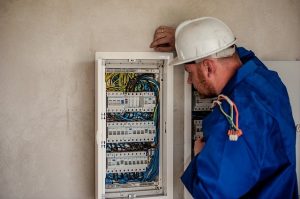Corporate Lawyers vs Criminal Lawyers
Legal professionals,regardless of what field they operate in,play an integral part in the just and fair modern society.
These expertly trained professionals devote their lifestyles to the study of and functional implementation of legislation,making sure the legal system works the actual way it ought to,as well as their clientele have the very best probability of a confident outcome.
There are several varieties of lawyers functioning throughout the uk,and all over the world,but two specifically be noticeable,dur within the primary for their representation on TV and in the multimedia.
Business and felony rules might be two of the most substantial-account regions of legislation and those who exercise them use a very specialised list of abilities and succeed in substantial-strain surroundings.
With this blog we are going to look at the variations between these two kinds of legitimate skilled letting you know what to assume whenever using possibly.
What exactly do Legal Lawyers Do?
Felony Legal professionals Edinburgh are experts in defending those who have been charged with criminal offences of any sort.
Yes,these represent the men and women you can see in the films and television dramas,standing upright in court and defending their customers,however the function requires a lot more than that by itself.
Felony legal representatives signify the clientele at each single period from the criminal method from the very first authorities interrogation up to desirable a decision if issues go that much.
They could even present you with suggestions before any expenses have been sent in on what you can do and to refrain from doing if approached by the authorities or confronted through your accuser.
Because of this it is strongly suggested that you simply realise you are an excellent felony lawyer the particular moment that you just suspect legal fees could be on his or her way.
What exactly do Corporate and business Lawyers Do?
Company lawyers operate work in the market planet,point Fits with additional documentation,talking to businesses,specialists and regulatory agencies as well. Each and every day,these experts will supervise mergers,acquisitions,organization partnership contracts and deal negotiations.
They might also have to happen in court for the business they symbolize in cases concerning company governance,unfair dismissal,place of work damage statements,and much more.
Every single main firm can have a corporate legal professional on retainer,or they may have their own personal in-property legal staff.
What exactly is the difference between both?
Apart from the completely different areas of rules they operate in there are numerous of essential dissimilarities between felony and corporate and business legal representatives.
Company lawyers invest considerably more of their time asking and telling to ensure their clientele don’t slip horrible of legislation from the beginning whilst legal attorneys are usually a lot more reactionary,defending individuals who have recently been accused of an offence.
Some illegal legal representatives may also function in everyone field before moving into an exclusive practice,being employed as a prosecutor or perhaps a open public defender. Business attorneys will probably transfer straight into a personal firm after making their education as being a junior relate or on the coaching deal before operating their way up-wards. For More Info Aamer Anwar & Co .




